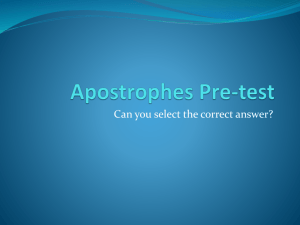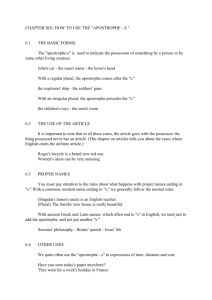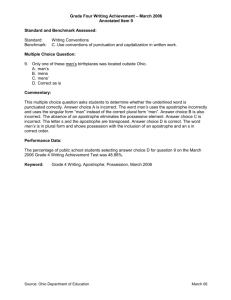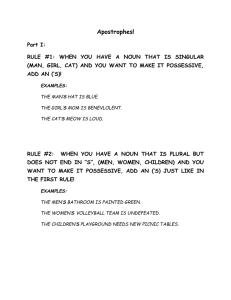USE OF THE APOSTROPHE
advertisement
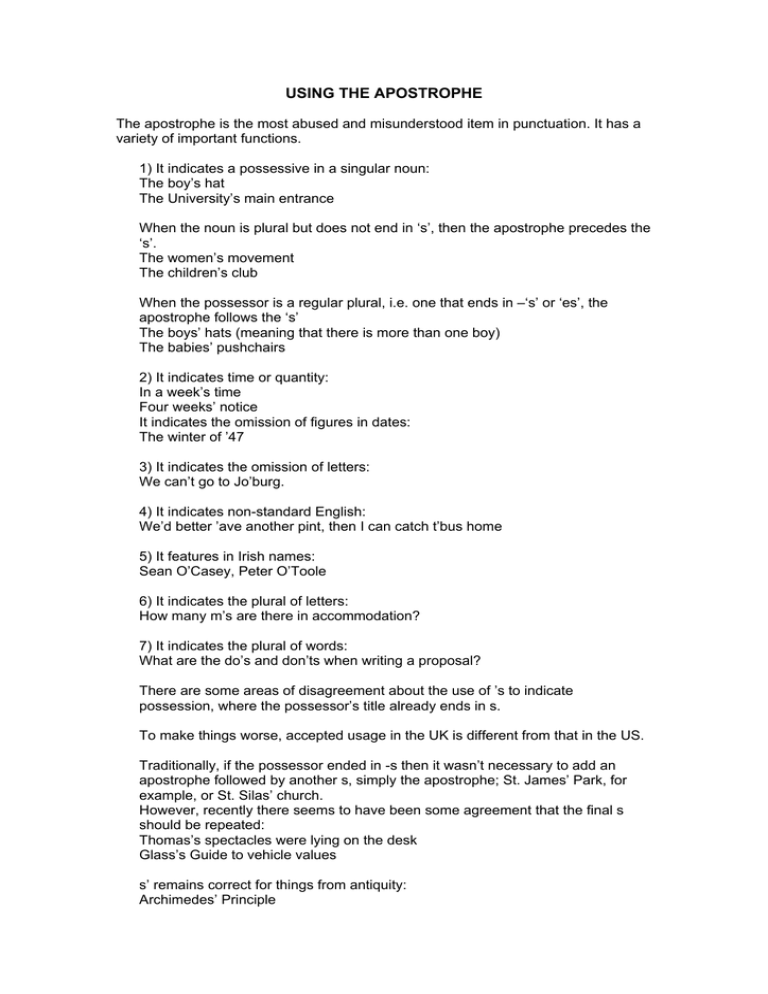
USING THE APOSTROPHE The apostrophe is the most abused and misunderstood item in punctuation. It has a variety of important functions. 1) It indicates a possessive in a singular noun: The boy’s hat The University’s main entrance When the noun is plural but does not end in ‘s’, then the apostrophe precedes the ‘s’. The women’s movement The children’s club When the possessor is a regular plural, i.e. one that ends in –‘s’ or ‘es’, the apostrophe follows the ‘s’ The boys’ hats (meaning that there is more than one boy) The babies’ pushchairs 2) It indicates time or quantity: In a week’s time Four weeks’ notice It indicates the omission of figures in dates: The winter of ’47 3) It indicates the omission of letters: We can’t go to Jo’burg. 4) It indicates non-standard English: We’d better ’ave another pint, then I can catch t’bus home 5) It features in Irish names: Sean O’Casey, Peter O’Toole 6) It indicates the plural of letters: How many m’s are there in accommodation? 7) It indicates the plural of words: What are the do’s and don’ts when writing a proposal? There are some areas of disagreement about the use of ’s to indicate possession, where the possessor’s title already ends in s. To make things worse, accepted usage in the UK is different from that in the US. Traditionally, if the possessor ended in -s then it wasn’t necessary to add an apostrophe followed by another s, simply the apostrophe; St. James’ Park, for example, or St. Silas’ church. However, recently there seems to have been some agreement that the final s should be repeated: Thomas’s spectacles were lying on the desk Glass’s Guide to vehicle values s’ remains correct for things from antiquity: Archimedes’ Principle Keats’ poems Jesus’ disciples. The apostrophe is responsible for the common problem with ‘it’s’, a little word which causes a lot of difficulty. However, the rule is very simple: it’s is the shortened form of ‘it is’ or ‘it has’. It’s my bike (it is) It’s turned very cold (it has) If it does not stand for one of these two, then the word to use is ‘its’: The fruit sold here is at its best This shirt has lost its colour in the wash.

